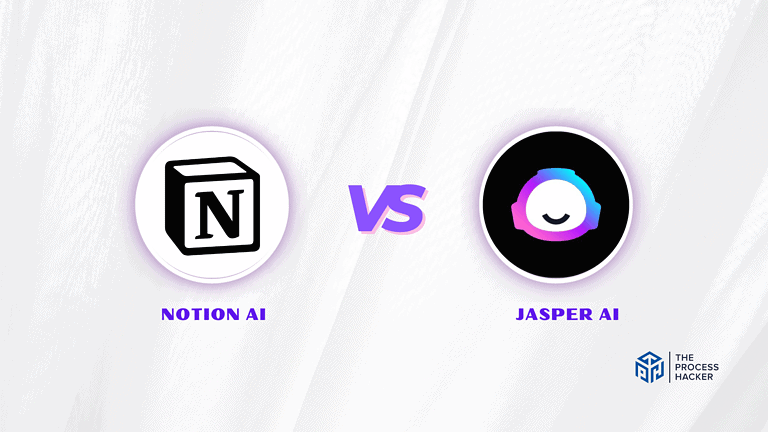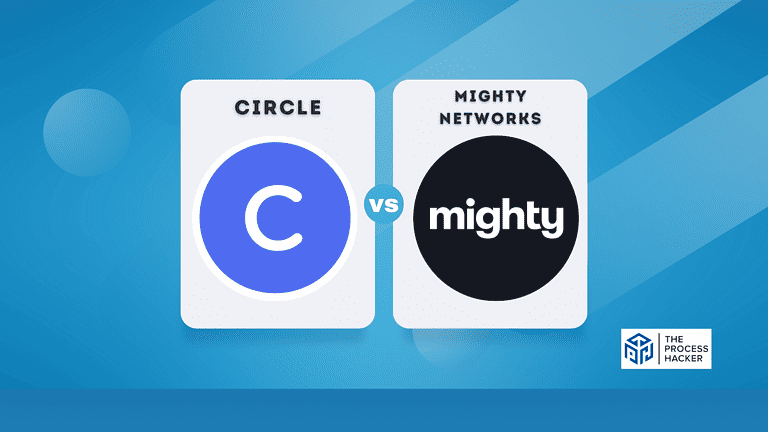How to Build a High-Performing Web Development Team Structure
Are you a small business owner looking to enhance your online presence? Or perhaps you’re an entrepreneur who dreams of launching the following revolutionary website or web app.
In today’s rapidly advancing digital era, the efficiency and effectiveness of a web development team have become critical to success in online endeavors. The digital revolution has reshaped business operations and how they manifest in the virtual realm.
Whatever your goals, one thing is sure—you need a high-performing web development team by your side. Building a successful web development team is crucial for bringing your digital vision to life, but it can be daunting.
The structure and synergy within these teams directly influence your web development projects’ quality, efficiency, and user experience, making their structure and operation pivotal for businesses in the digital space. There are many moving parts, from finding the right talent to creating an effective team structure.
But fear not. This blog post will break down the critical steps to building a high-performing web development team structure that will set you up for success. So grab a coffee, sit back, and get ready to transform your digital dreams into reality.
What is A Web Development Team?
A web development team typically encompasses various roles, each contributing uniquely to creating web apps and products. These teams are responsible for everything from coding to designing user interfaces, and handling every facet of building and launching a web application.
In digital development, a web development team is not just about a group of individuals working on a project. It represents a synergy of diverse skills and roles, each integral to creating effective and engaging web solutions.
The Essence of a Web Development Team
Understanding this team means appreciating the complexities involved in web development and recognizing how each member contributes to the success of the final product.
A web development team is a group of professionals specializing in creating and maintaining web applications and websites. This team typically includes roles like web developers, UX/UI designers, project managers, and QA engineers.
Each person has a specific role in the process and contributes expertise to ensure the web solution is functional, user-friendly, and meets the client’s requirements.
Evolution of Web Development Teams
Over the years, the structure of web development teams has evolved significantly. Initially, these teams were often small, with a few individuals handling multiple stages of web app development.
However, as technology advanced and the complexity of web applications increased, the need for specialized roles in a team member became evident. This evolution led to more structured teams, with clear divisions between front-end and back-end development, design, and testing.
What are the Key Roles of the Web Development Team?
The team comprises several web development team members with distinct roles to play. The key to the success of website development projects lies in the seamless collaboration and communication between every team member.
Here are the critical roles for the Web Development Team structure:
#1) Back-End Developers
The back-end developer is responsible for managing the behind-the-scenes functionality of a website. These responsibilities include handling database management, server-side scripting, application logic, and other nuts and bolts of web development that power the front end of a site. With a skilled back-end developer, a website would function smoothly and efficiently.
They work closely alongside front-end developers to ensure the site’s interface is built appropriately. They also liaise with designers, project managers, and other professionals to ensure the site meets the client’s needs.
Ultimately, the back-end developer focuses on building a robust, secure, and reliable site that can handle significant traffic and provide users with a seamless experience.
#2) Front End Developers
The front-end developer is responsible for creating and maintaining the visible elements of a website or web application, focusing on the user interface and user experience. Their expertise in coding languages such as HTML, CSS, and Javascript allows them to ensure that the website looks and functions as intended across various devices and platforms.
They work closely with back-end developers, web designers, and other team members to ensure that the website meets the client’s requirements and provides a seamless end-user experience. They also play a crucial role in optimizing the site’s performance and ensuring it is secure and user-friendly.
In short, the Front End Developer is the bridge between design and functionality, ensuring that a website looks great and works flawlessly.
#3) Full Stack Developers
Full-stack developers are versatile, with the skills and knowledge to work on front-end and back-end development. With expertise in various programming languages, databases, and frameworks, Full-Stack Developers are responsible for designing and creating efficient, functional, and user-friendly websites.
They act as a bridge between the design and technical teams, ensuring that the website development process runs smoothly. Their job includes writing and testing code and providing the website’s security, scalability, and performance.
Full Stack Developers have become increasingly in demand for businesses embracing digitization or startups where broad skill sets are essential.
#4) Web Developer
The web developer is responsible for building and maintaining the website, so they must deeply understand coding languages and programming. They must also have a keen eye for detail to ensure the website is user-friendly and visually appealing.
The web developer and the designer ensure the website runs smoothly and all links work correctly. In addition, a web developer is responsible for continuous updates and enhancements to keep the website up-to-date and relevant.
Without a dedicated web developer, building and maintaining a website would be challenging.
#5) UI UX Designers
The UI UX designer enhances user experience and interface design elements. They ensure that the website or application is easy to navigate, visually appealing, and user-friendly, enabling users to perform tasks efficiently.
UI UX designers collaborate with developers, content creators, and other professionals to create exceptional interactive designs. Their background in design principles, typography, and color theory enables them to use UI elements to highlight essential information, create visual hierarchy, and provide users with intuitive navigation.
The designer’s input and expertise help create the overall user experience, increasing traffic, retention, and satisfaction. Overall, a UI UX designer helps the web development team develop an aesthetically pleasing and easy-to-use website or application.
#6) Quality Assurance (QA) Engineer
The QA/Quality Assurance Engineer plays a vital role in ensuring that the website functions optimally and meets the needs of users. Working closely with the web development team, Quality Assurance Engineers evaluate the web design test functionality and identify potential issues before the website goes live.
They aim to catch any issues before users can, ensuring the website functions as intended. A Quality Assurance Engineer adds valuable expertise to the web development team, providing a critical eye for detail and precision. They are responsible for creating test plans, executing tests, and tracking issues or bugs to resolution.
Their contributions help facilitate a website’s successful launch and ensure its ongoing quality.
#7) Product Manager
The Product Manager ensures the team is aligned with the company’s objectives and strategy. This involves defining the scope, prioritizing features, and establishing a roadmap for the product.
Throughout the development process, the product manager is the main point of contact between the development team and other stakeholders, such as clients and business leaders. They communicate progress, gather feedback, and ensure the product meets its intended users’ needs.
Without a skilled product manager leading the way, the team risks building a product that fails to deliver because it is not what users want or because it overlooks critical business goals. By embracing the product manager’s role, web development teams can create successful products in the marketplace and for the business as a whole.
#8) Project Manager
The Project Manager oversees and ensures that projects are running smoothly and efficiently. As a liaison between the Product Manager and the web development team, the Project Manager manages timelines and delegates tasks. They ensure that the project is delivered on time and within budget.
Additionally, the Project Manager ensures that the team works cohesively and communicates effectively to minimize setbacks and maximize productivity. With their extensive knowledge of the entire development process, a Project Manager can identify potential problems early on and implement contingency plans to avoid any issues.
Overall, the Project Manager is crucial in helping to deliver quality products on schedule and ensuring everyone involved is working towards the same goal.
#9) Solutions Architects
A Solution Architect’s role involves designing and implementing the overall structure of a website or application. Their primary responsibility is creating Site Architecture Diagrams, visually representing the website’s information hierarchy.
These diagrams allow the team to understand and implement the website’s various components. Solution Architects work closely with developers, designers, project managers, and other stakeholders to ensure the site’s functionality and design meet the client’s requirements.
They play a vital role throughout the development process, from design to implementation and post-production support. Overall, a Solution Architect’s contribution to the web development team is essential in delivering an effective and efficient website to the client.
#10) Business Analysts
The business analyst ensures the project’s success and profitability. They are responsible for analyzing the business operations, identifying areas for improvement, and translating those requirements into technical specifications that the development team can implement.
In this way, they serve as the bridge between the business and technical sides of the project. The Business Analyst will work closely with the client and stakeholders to understand their needs and then collaborate with the developers to create practical solutions that will help achieve the project’s goals.
They must be well-versed in business and technical languages, as they must communicate effectively with both parties. Overall, the Business Analyst is pivotal in ensuring the developed website meets the client’s expectations and delivers the desired results.
#11) Marketing Strategist
The marketing strategist is responsible for understanding the target audience, market trends, search engine optimization (SEO), and customer needs. With this knowledge, they can guide the team on the best way to design and develop the website to ensure that it meets the target audience’s requirements and aligns with the overall marketing strategy.
The marketing strategist also manages the messaging and branding, ensuring that the website’s content portrays the desired image and is consistent with other marketing efforts. Ultimately, the Marketing Strategist links the technical team and the company’s marketing goals.
Web Team Roles and Responsibilities
Each role within the web team carries specific responsibilities crucial for the project’s success. For instance, back-end developers focus on server-side logic and database management, while front-end developers handle client-side coding. Understanding development team roles and responsibilities is vital for effective collaboration and project management.
The roles within a team are interdependent. The work of UX/UI designers directly impacts front-end developers, and insights from business analysts can significantly influence the product manager’s strategy. This interconnection requires strong communication and collaboration within the team to ensure all aspects of the web project are cohesively integrated.
Achieving a balance between technical and managerial roles is critical to a team’s success. While developers, designers, and QA engineers focus on the technical aspects, project and product managers handle the planning, coordination, and execution of the project.
This balance ensures that the technical quality of the web solution is maintained while the project also aligns with the set timelines, budget, and business objectives.
How Do You Structure a High-Performing Web Development Team?
Structuring a high-performance web team is a complex process that involves more than just assembling skilled individuals. It’s about creating a synergistic team where the sum of the whole is greater than its parts.
The web development team structure is critical in determining its efficiency and effectiveness. This structure is pivotal for ensuring efficient workflow, innovation, and, ultimately, the success of web projects. As said earlier, a well-structured team combines various roles, providing a balance between technical skills and project management.
Importance of a Balanced Team
A balanced team with diverse skills is essential for developing comprehensive web solutions. While developers focus on coding, designers ensure the user interface is engaging and user-friendly.
Meanwhile, project and product managers oversee the project’s progress and alignment with business goals. This diversity allows for a holistic approach to web development, ensuring all aspects of the project are adequately addressed.
Team Compositions for Different Project Types
The composition of a web development team can vary depending on the project type. Startups might prefer smaller, more agile teams with full-stack developers who can handle multiple aspects of development.
In contrast, larger enterprises might opt for bigger teams with specialized roles due to the scale and complexity of their projects. The key is to tailor the app or website development team structure to the specific needs and goals of the project, ensuring efficiency and effectiveness in the development process.
The Web Development Process and Team Dynamics
The web and application development process is segmented into the following stages: planning, design, development, testing, and deployment. Each stage requires different team members to contribute their expertise.
For instance, business analysts and project managers are crucial in the planning stage, while developers and designers lead during the development phase. Lastly, QA engineers play a vital role in testing and ensuring the quality of the final product.
Influence of Team Structure
The structure of the web development team significantly influences the efficiency and outcome of the product development process. A well-structured team, with clearly defined roles and streamlined business processes, can significantly enhance productivity and ensure a higher quality end product.
This structure is fundamental in managing complex projects, where coordination and collaboration among specialists are essential.
Role of Project Management Tools
Project management tools are indispensable in enhancing team productivity and communication. These tools help track progress, manage tasks, and maintain documentation.
They also provide a central platform for all team members to stay updated, share information, and collaborate effectively, which is crucial in the dynamic environment of web development.
Jira
As a project management tool made for software development, Jira enables teams to plan and track projects, assign tasks, and monitor progress. This software is handy for web development teams as it offers various features that cater to their needs.
For instance, Jira allows teams to break projects down into smaller tasks and subtasks, which can be assigned to team members with specific due dates. This level of visibility ensures that everyone on the team is on the same page and aware of what needs to be done to complete the project successfully.
Additionally, Jira’s ability to integrate with other web development tools, such as GitHub, Confluence, and Bitbucket, makes it an essential tool for managing projects in a web development environment.
ClickUp
ClickUp is a project management software tool that enables team members to collaborate seamlessly on various tasks and projects. With ClickUp, the web development team can track their progress, manage deadlines, spot bottlenecks quickly, and communicate effortlessly.
The platform offers a range of features designed to streamline workflow, from task prioritization to automatic notifications. ClickUp provides practical solutions to enhance productivity, allowing developers to concentrate on creating stunning web applications and websites.
Overall, ClickUp plays a crucial role by providing a centralized hub that enables efficient task management and seamless communication.
Integrating Business and Marketing Perspectives
Integrating business and marketing perspectives into a web development team is crucial for aligning the team’s technical efforts with the organization’s broader strategic goals. This integration ensures that the web solutions developed exhibit technical excellence, resonate with market needs, and drive business value.
Business Analysts in Web Development
Business analysts in a web development team play a crucial role in aligning the project with the client’s business objectives. They analyze market trends, customer needs, and business goals to ensure that the web solution functions well and delivers value to the business.
Their insights help in making informed decisions throughout the development process.
Role of Marketing Teams
Marketing teams also play a significant role in developing web solutions. They provide valuable insights into market needs, customer preferences, and competitive landscapes.
This information is crucial in designing and developing a web product that resonates with the target audience and stands out in the market.
Understanding Business Needs
Understanding business needs is essential for developing a successful web product. This involves technical proficiency and an understanding of the market, customer expectations, and business strategy.
A web development team that aligns its efforts with these broader business objectives can create more impactful and relevant web solutions.
Challenges and Solutions in Web Development Teams
Web development teams often face tight deadlines, evolving project requirements, and maintaining high-quality standards. These challenges arise from technological advancements, changing user expectations, and the complexity of web projects.
To address these challenges, adopting best practices is crucial. These include:
Agile Methodology
Implementing agile practices helps manage changing requirements and ensures a more adaptive and responsive development process. This methodology involves breaking down a project into smaller, manageable tasks and completing them in short iterations.
Agile allows for better collaboration and communication within the team, leading to increased efficiency and improved results.
Scrum
Scrum is a specific framework under the agile methodology that focuses on continuous delivery and frequent feedback. It involves daily stand-up meetings, regular sprint planning sessions, and retrospectives to improve the development process continuously.
By following the principles of Scrum, teams can maintain a steady pace of work, prioritize tasks effectively, and make necessary adjustments based on feedback.
Continuous Learning
Encouraging team members to stay current with the latest technologies and trends can address challenges posed by rapidly evolving web technologies pose. This can be achieved through regular training, attending conferences, and participating in online communities.
Regular learning sessions also promote a growth mindset within the team, leading to innovation and improved problem-solving skills.
Effective Communication
Regular meetings, clear communication channels, and collaborative tools significantly enhance coordination and problem-solving within the team. By utilizing video conferencing, instant messaging, and project management tools, team members can easily communicate with one another regardless of their physical location.
Furthermore, effective communication within the team also promotes transparency and trust. Team members who feel heard and valued are more likely to contribute their ideas and opinions, leading to better decision-making and problem-solving.
Quality Assurance
Quality assurance (QA) is critical in web development companies and in-house teams. QA engineers focus on testing the web product for bugs, performance issues, and usability flaws.
This step is crucial for ensuring the application’s functionality and guaranteeing a good user experience. A thorough QA process leads to a more reliable and user-friendly product.
Final Thoughts on Building High-Performing Web Development Teams
In conclusion, building a high-performing web development team is more important now than ever. A solid and efficient team is crucial with the increasing reliance on technology and the need for businesses to stay ahead in highly competitive markets.
By following the tips and advice in this blog post, you can set your team up for success and take your organization to new heights of innovation and growth. Communication, diversity, and collaboration are critical elements to creating a cohesive team to tackle any challenge.
As you assemble your dream web development team, remember to take advantage of managed cloud services and dedicated servers to optimize your operations and enhance your productivity.
So what are you waiting for? It’s time to implement these learnings and build a solid team today! Your future self will thank you for it.
Cheers to creating an unstoppable force in the digital world!








